Goodevening Black Population Time to Get Addicted to Crack
Dannis Billups' addiction nightmare began with an actual nightmare when he was about 4 years old. His daddy sat him on his knee and gave him a half-can of Pabst Blue Ribbon beer to soothe him.
In the 1980s, he joined the "family trade," a young black man peddling crack cocaine on the streets of Newark, New Jersey, profiting from other people's addiction and pain.
Within a few years, he became his best customer. His life became a never-ending ride on the criminal justice carousel: arrests, jail, probation and then back in the system for another spin, some two dozen times, on and off the ride he went.
"They would never offer you treatment," said Billups, now 53. "They would just lock you away and forget about you."
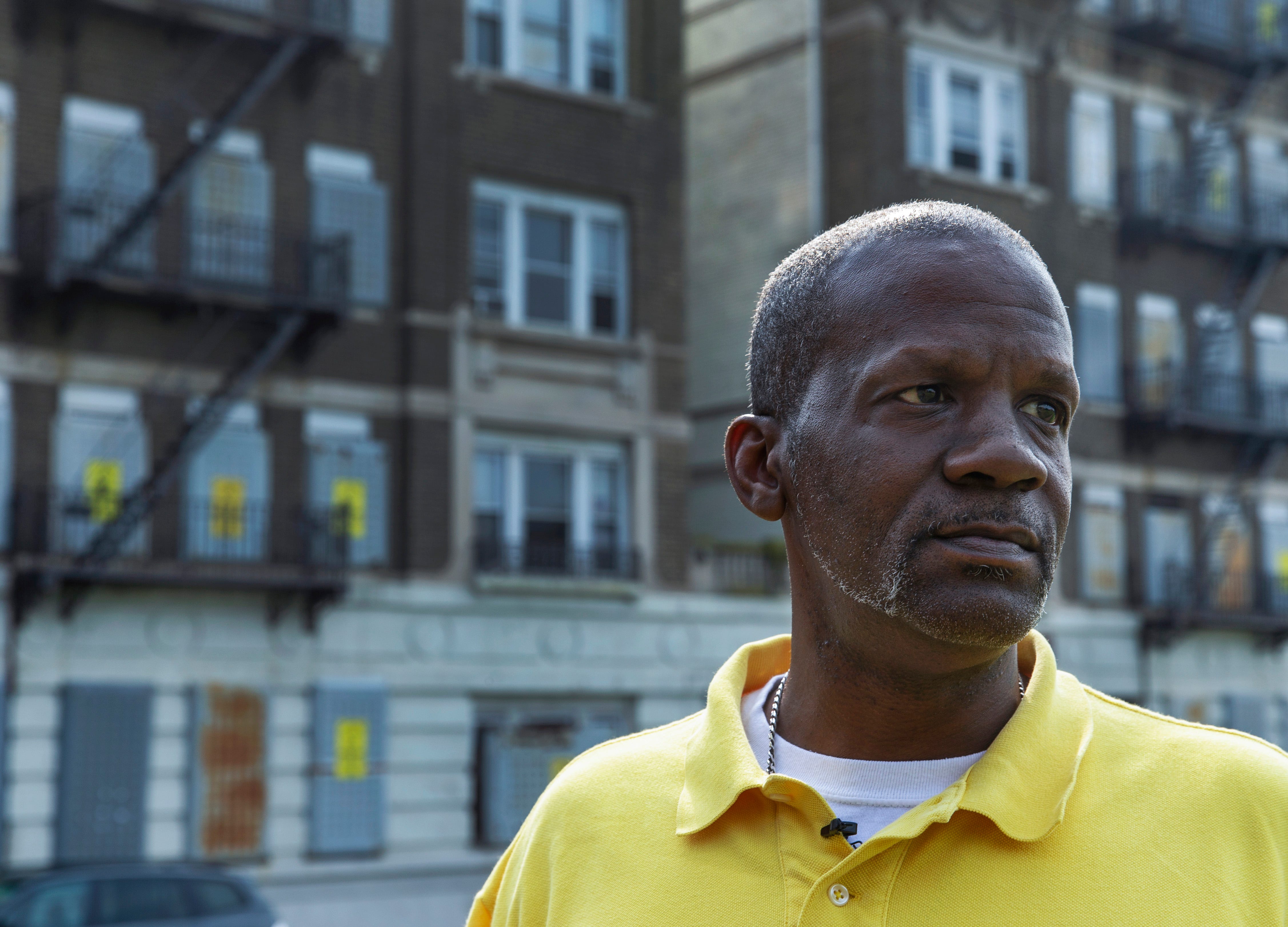
A generation after crack hit Newark, in the idyllic Jersey Shore suburb of Manasquan, a white hometown football hero named Richie Lapinski took a seat on the same merry-go-round. Like Billups, Lapinski developed a substance abuse problem, although his drugs of choice were prescription pills and heroin, the growing menace of whites.
But where Billups was punished with jail and probation, Lapinski snared the brass ring: addiction treatment paid for by taxpayers. He landed in Drug Court — not the true lock-em'-up criminal court Billups faced — where Lapinski's record could be wiped clean. He was granted a new life outside of the system, if he kept his end of the bargain and stayed clean.
If the (crack) addicts were predominantly white, instead of black, we would have offered them treatment, as we do now.
Different times. Different races. Different outcomes.
Their lives illustrate the racial double standard that's been hard-wired into the nation's drug laws and criminal justice system since the heyday of the crack epidemic in the late 1980s and continues today.
The dichotomy is stark. When it comes to the heroin and prescription opioid epidemic, the priority is saving lives. In contrast, the remedy for crack was mass arrests and stiff prison sentences. One state even seriously considered bringing back the whipping post to punish drug offenders.
Crack vs. Heroin: From 'war' to 'compassion'
The struggles of two New Jersey men -- one addicted to crack, the other to opioids -- show the differences and similarities of the two epidemics.
Doug Hood, Peter Ackerman, Thomas P. Costello and Brian Johnston, Asbury Park Press
"If the (crack) addicts were predominantly white, instead of black, we would have offered them treatment, as we do now," said Robert M. Stutman, the special agent in charge of the Drug Enforcement Administration New York City office during the 1980s war against crack.
"The crack years was one of the most racist periods of our government," he said. "And I'm white and very conservative."
Opioids have changed the way America looks at drug users, but it hasn't changed the fact that blacks are punished more severely than whites for drug crimes, even though drug use within the two racial groups is roughly the same. To be sure, millions of whites have been arrested and prosecuted for drug crimes as well – but the black arrest rate has been and remains out of proportion to black Americans' share of the U.S. population.
In a yearlong investigation, the Asbury Park Press and the USA TODAY NETWORK examined hundreds of thousands of arrest records and federal drug convictions nationwide over the past 30 years and found:
- Most crack users were and still are white, according to federal surveys, but blacks were sent to federal prison nearly seven times more often for crack offenses from 1991 to 2016. From 1991 through 1995, the ratio was more than 13 blacks imprisoned for every white defendant locked behind bars.
- Nineteen of the nation's 94 federal court districts, excluding island territories Guam and the Northern Mariana Islands, didn't send a single white defendant to federal prison on crack charges from 1991 through 1995. Among them were districts that encompass such major cities as Chicago, Indianapolis and Houston. A greater number of whites were prosecuted for crack offenses in state courts.
- White drug offenders have been punished less severely than blacks. Among those drug offenders with little to no prior criminal history, blacks were sent to federal prison 40 months longer on average than non-Hispanic whites for crack and cocaine possession and distribution from 1991 through 2016.
- Blacks weren't just punished more severely, they were arrested far more frequently. From 1980 to 2014, the rate of drug arrests for accused black cocaine and narcotics offenders was at least twice the rate of whites, and it was often much higher than that. FBI drug arrest data combines crack and powder cocaine offenses. Heroin and other opioids are classified as narcotics.
- Hispanics also have been prosecuted on federal crack charges at a higher rate than whites, though the disparity is not as great as between whites and blacks. The FBI does not track drug arrests by ethnic group.
- The racial disparity in drug arrests continues today. Even though heroin and prescription opioids are more deadly, there were nearly four times more arrests for cocaine than opioid drugs in 2016. In fact, far more blacks (85,640) were arrested for cocaine than whites were arrested for heroin and other opioids (66,120) that year.
- Blacks in 21 states were arrested at a rate at least three times higher than whites for narcotics and cocaine offenses combined in 2016. In Iowa, where black residents constitute about 4% of the state's population, blacks were more than 11 times as likely as whites to be arrested for cocaine or narcotics offenses. In Vermont, the ratio was more than nine times higher for blacks.
'Lock 'em up, lock 'em up'
The racial gap in drug enforcement and sentencing is a byproduct of America's punitive response to the crack crisis of the late '80s and the war on drugs it unleashed.
The signature law of that era was the federal Anti-Drug Abuse Act of 1986, which singled out crack offenders for the most severe punishment. Under the law, possession of five grams of crack cocaine incurred the same five-year minimum sentence as 500 grams of powder cocaine. That 100-to-1 quantity disparity, the equivalent of 2 ½ cups vs. 1¼ teaspoons of sugar, remained in place until 2010, when the federal ratio was reduced to 18 to 1.
The harshest critic of the 1986 law? The congressional staffer who helped write it.
"The racial implications of the 1986 law were devastating," said Eric E. Sterling, then legal counsel to the House of Representative's Subcommittee on Crime.
"If you tried (to) identify the law that in the entire history of the U.S. Congress has been the most unjust criminal law in the way that it has been applied, in which the most …people have served scores of years of imprisonment longer than they deserved, it is the law that I helped write."
[This story is part of our Crack vs. Heroin investigation. The project examines how the responses to crack and opioids created an unfair justice system; what needs to be done to fix the inequity; the role that culture and comedy play; and our top 5 takeaways from the project.]
But the story of crack versus heroin isn't just about numbers and statistics. It's also about the people who got caught up in the nation's harsh reaction to crack, the societal stereotypes that were reinforced by strict laws and aggressive policing and then amplified by the media, and the long-term collateral damage from policies that wound up hollowing out large swaths of America's cities.
In the last 20 years, America's thinking toward drug addiction evolved to the benefit of all groups, not just whites. The massive loss of life from opioid-related overdoses is a big reason why attitudes shifted.
Since the opioid epidemic began in the late '90s, heroin and other opioid overdoses have killed 400,000 Americans, as many as were lost in World War II. By comparison, fewer than 10,000 fatal cocaine overdoses per year happened during the peak years of the crack epidemic, though precise death counts are hard to come by, and only a portion of those deaths involved crack.
The socioeconomic context of the two epidemics differ, as well. Images of ramshackle houses, trash-strewn streets and boarded-up tenement housing defined the nation's crack epidemic, while the opioid crisis has taken root in affluent and middle-class subdivisions, in trendy city neighborhoods and along the rural countryside and back roads of small-town America.
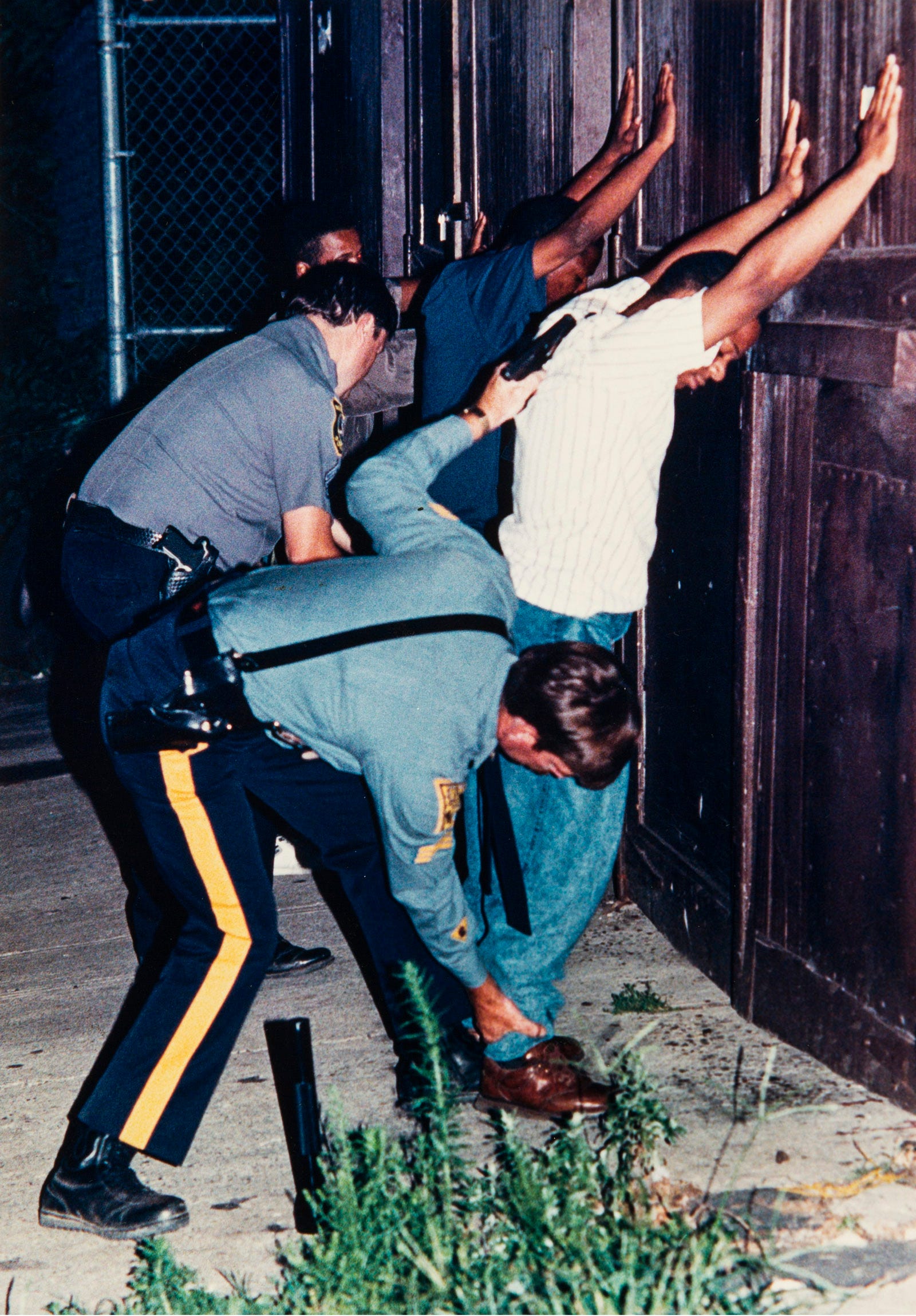
Beginning in the early 2000s, as heroin and prescription opioid abuse gripped white, middle-class America, national leaders took pause.
The language began to change.
Illegal drug users became "victims" of a seemingly new disease called addiction. Drug abuse was no longer about punishing evil, faceless "crackheads" and "super-predators" with long prison terms. Treating addiction was about helping a family member, a neighbor, a friend — language that wasn't used during the crack years.
Becky Savage of Granger, Indiana, lost her sons, Nick, 19, and Jack, 18, on the same day in 2015 to oxycodone overdoses. The brothers experimented with a prescription opioid while drinking at a high school graduation party. Now the head of a foundation that warns of the dangers of prescription drug abuse, Savage speaks around the country to increasingly empathetic audiences.
"In every single city I go to, I am approached by someone who has been intimately affected by this epidemic. Whether it be a student who lost a sibling or a student who has a parent who's struggling with these issues or educators who will come to me and say they've lost students," Savage said.
"It's just overwhelming how many people have been directly affected by this issue."
The medical community knew in the 1980s that drug addiction was a disease. But America's political leaders chose not to view crack in those terms. About one-fourth of the $1.7 billion in federal funds Congress provided to fight the crack menace in 1986 was earmarked for treatment, rehabilitation and prevention programs. The rest went to law enforcement and incarceration.
The reverse is true with opioids. Three-quarters of the $7.4 billion Congress set aside in fiscal year 2018 (the most recent data available) to respond to the ongoing opioid epidemic was earmarked for treatment, recovery and prevention programs, while another 7% went to research, according to an analysis by the Bipartisan Policy Center in Washington, D.C.
Criminal justice, law enforcement and interdiction received 16% of the opioid funding. And much of the funds allocated to the Department of Justice went for programs that aren't focused on enforcement and punishment. For example, $46.6 million went to the DOJ's Helping Children and Youth Impacted by Opioids program, which provides young people traumatized by or addicted to opioids with counseling, treatment and mentoring.
In the crack era, though, there was little public support for such social programs. The police then had one mission: Make drug arrests.
"It was sold at the state level, 'Lock 'em up, lock'em up, lock'em up.' And that's all we did," said George Corbin, a retired police lieutenant in Asbury Park, New Jersey, a city made famous by rocker Bruce Springsteen. Today, Corbin volunteers at a local program that offers expungement services to the same people he helped arrest back in those years.
Contrast that to the reaction to opioid abuse. In Kenton County, Kentucky, the county jail partnered with the Hazelden Betty Ford Foundation to create a program where inmates with opioid addictions undergo a medication-assisted treatment plan. In Ocean County, New Jersey, illegal drug users can walk into several police stations and sign up for treatment services without fear of arrest.
Nothing like that was available during the crack years.
Crack vs. Heroin: 'What is the difference?'
Michelle Goodwyn, whose life was destroyed by crack, speaks candidly about the role of race in America's response to drug abuse.
Tanya Breen, @tanyabreenphoto
That tough-on-crime mindset changed Michelle Goodwyn's life forever. Her crack addiction consumed her to the extent that she does not recall the years she gave birth to any of her four sons. She lost custody of them, as well as a daughter.
"I loved crack more than I loved my kids," said Goodwyn, 53, a black resident of Asbury Park, New Jersey who has been in recovery for the past five years.
In 1998 she was sentenced to four years in prison for possessing what she said was $25 worth of crack; she wound up serving about one year. There was no life-saving opioid antidote, no medical care or compassion for her — just prison.
"All of a sudden it's a big thing because somebody's nephew or son died," Goodwyn said. "But we've been dying for years.
"All of a sudden the white kids are starting to die so now it's a problem. But it's been a problem. Why didn't they give a f--- about us?"
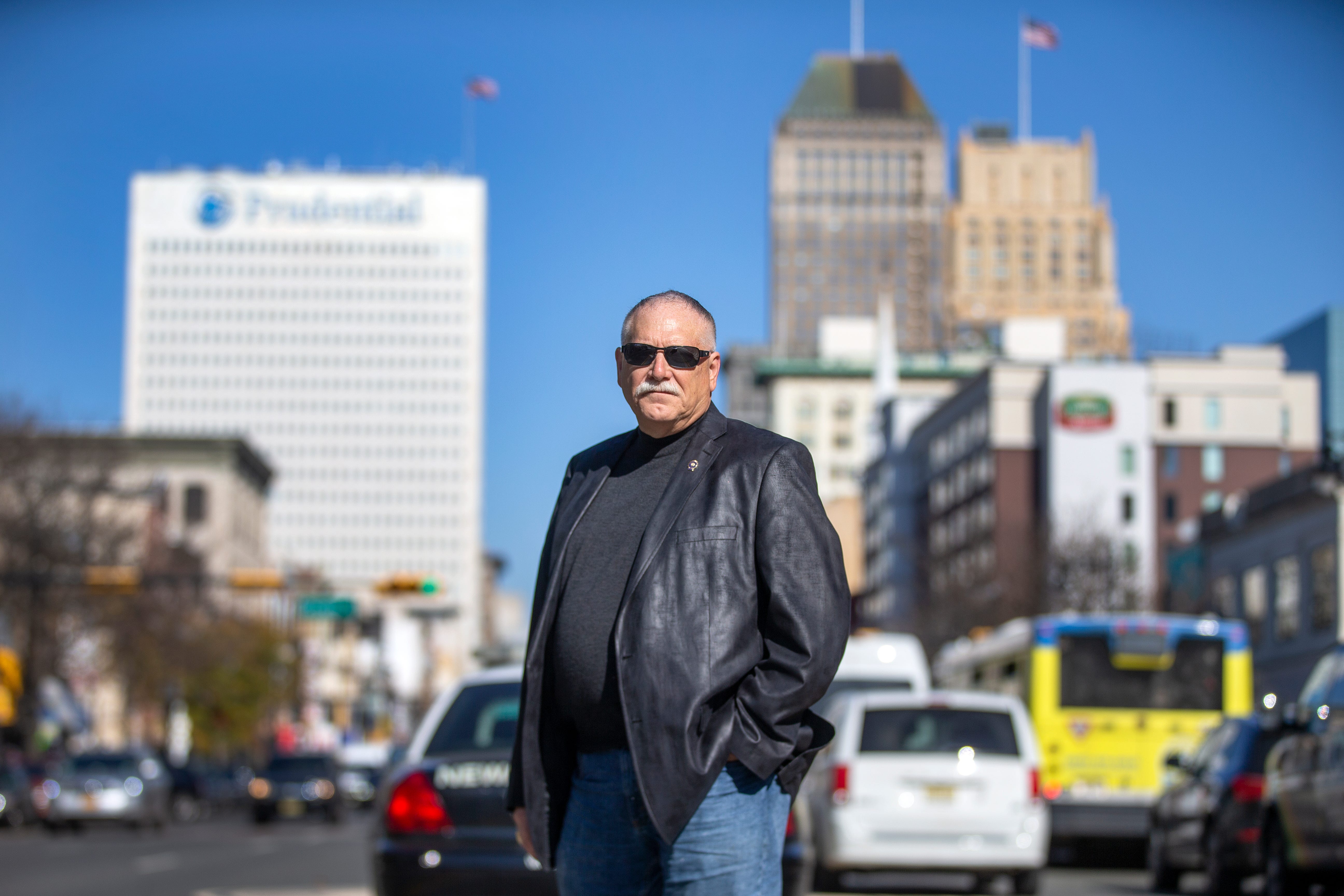
Change in attitude
Ed Stetzer was a 24-year-old pastor in 1990 when crack and drug-related crime became a serious problem in his Buffalo, New York neighborhood. Drug users even broke into his home.
Along with other pastors at the time, he said, he thought the solution was to put people behind bars.
"When you know somebody and you watch them get addicted, you don't see them as a criminal when they start stealing to pay for their habit. You see them as somebody who is sort of in trouble and needs help," Stetzer said.
"But when you see (drugs) overwhelm your community all at once, you don't see the personal contact. You say 'Get these people out.'"
Three decades later, Stetzer's attitude has changed. Now executive director of the Billy Graham Center in Wheaton, Illinois, and a leading evangelical Christian pastor, Stetzer, who is white, penned an op-ed in the Washington Post in 2017 repenting for the harsh views he says he had toward crack users.
"Instead of getting rid of a drug, we tried to get rid of people," he wrote.
National drug policy changed from First Lady Nancy Reagan's "Just Say No" campaign and harsh prison terms to "Just Say Yes" to treatment. Police in many communities now commonly carry naloxone, the drug that rapidly reverses opioid overdoses. The antidote is so widely available today that Delta Airlines has begun bringing it on their flights.
When whites started getting addicted and dying from opioids —in rural communities like Huntington, West Virginia, to Midwest cities like Dayton, Ohio, to the affluent suburbs of California's Silicon Valley – the tone of the problem changed. The narrative often repeated by the media switched from depicting crack addicts as scary and threatening, to portraying those addicted to opioids as sympathetic victims who needed help.
Tom Morello, a guitarist for the hard rock/hip-hop band Rage Against the Machine who is an outspoken advocate of criminal justice reform, is among those who believe that race is a defining difference between the two drug crises.
"The crack cocaine epidemic of the '80s was something that was looked at like this kind of a virus that needed to be stamped out, and the people who were involved in it where these subhumans who needed to be put away, " Morello said.
For many, it is the prescription medicine aspect – the doctors as pushers – that makes the opioid crisis unique and distinguishes it from crack cocaine.
Even today, there are almost as many opioid prescriptions being written in some states as there are people: In Tennessee, there were 94.4 opioid prescriptions written for every 100 people in 2017, nearly double the national average of 58.7, according to the National Institute on Drug Abuse. Other states with high rates included Oklahoma (88.1), Kentucky (86.8) and West Virginia (81.3.)
Gil Kerlikowske, who served as President Barack Obama's first drug czar from 2009 through 2014, said he felt there wasn't enough education in the medical community regarding the dangers of prescription opioids. He said dentists were especially prone to overprescribing.
"You'd see teenagers go in for removal of wisdom teeth, and they'd come out with a prescription for 60 Oxycontin," Kerlikowske said. "I talked to physicians who were taught as long as someone is in real pain… you can prescribe as much painkiller as possible. You don't have to worry about them becoming addicted, which is totally false."
Lapinski, the former Jersey Shore football star, was one of those who excelled at doctor-shopping. In his drug-dealing days, it wasn't unusual for him to go to 30 doctors and get prescriptions filled. He became an expert at finding "quacks" who would write any prescription you wanted, as long as you had an MRI (magnetic resonance imaging) scan. Then he would send others to the same doctors. More doctors, more prescriptions filled, more pills for him to sell on the streets.
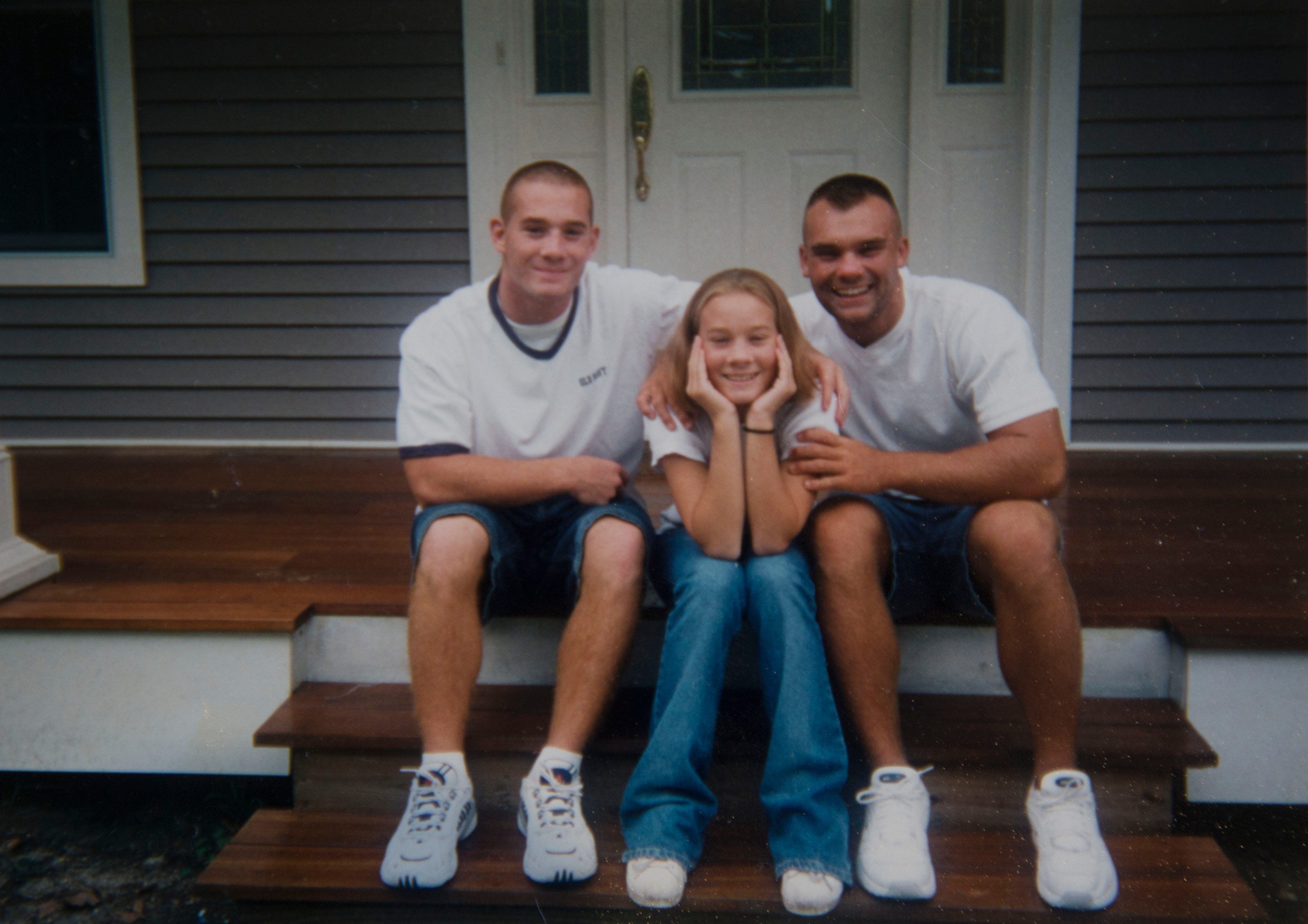
Lapinski made a decent living as a dealer, but his fortunes changed for the worse when new laws restricting opioid prescriptions took hold. "It eventually catches up to you," he said.
By the time that happened to Lapinski, he was using crack in addition to Xanax, heroin and prescription opioids. One break after another saved him from a lengthy prison sentence. In 2010, he was sentenced to three years in state prison but was released on intensive supervised probation after about a year behind bars.
Even then, he went back to dealing and using drugs.
Lapinski knows that he was given chances that crack users never had. And that he wasted most of them.
"I can't tell you why I did it," Lapinski said. "I can't give you, like, an exact reason. I just made every bad choice you can make."
"It was terrible because I put my parents through hell. They were good parents. They raised me right, and I made all bad choices," he said.
War on crack
For many Americans, the crack epidemic is a distant, virtually forgotten chapter of U.S. history, if they know about it at all.
Today for Dannis Billups, it's a 45-mile drive up the New Jersey Turnpike from his home in Asbury Park. Once he's back in his boyhood hometown of Newark, all he has to do is head up Clinton Avenue, hang a left onto Stratford Place, and there it is, looming in front of him.
"This is where it all began," he said one summer morning, standing in the shadow of the Aspen Stratford Apartments, "right here in this building."
Steel security screens bar the Aspen Stratford's front entrance and lower windows. The city condemned the building four years ago and helped relocate the hundred or so low-income families living there. Most were only too happy to say goodbye. Rats, bed bugs, water leaks, mold and drug dealers had made life there miserable for decades.
Back in the 1980s and '90s, at the height of the crack epidemic, Billups was one of those drug dealers.
Crack began showing up in a handful of major cities in the mid-1980s as a new, smokable and far more intense variant of cocaine. It was as easy to make as brownies. All you needed was some powder cocaine, water, baking powder and heat. The purified cocaine "rocks" the crack recipe produced, which made a cracking noise when heated, sold for just $5 to $10 a vial.
Once crack arrived in Newark in 1986, thousands beat a path to the Aspen Stratford's front door. Many were black residents from the city's poorest neighborhoods, Billups said, but whites from the suburbs, including lawyers, business executives and housewives, found their way there, too.
Like a lord in his castle, Billups used to survey his domain from the balcony outside his family's fifth-floor corner apartment. From up there he literally could see the cops coming from a mile away, and watch the neighborhood's well-oiled drug market humming along with Amazon-like efficiency on the street below.
"The attitude was, 'it's in the inner city, that's where you go,'" said Barry Colicelli, a retired captain with the Newark Police Department who remembers the Aspen Stratford as one of the city's hot spots for crack.
"I mean, I saw women from Millburn, Verona, Alpine (all affluent North Jersey suburbs) doing things — housewives with three kids — doing s--- that would just make your head turn," Colicelli said.
Similar scenes were playing out on the streets of Washington, D.C., Detroit, Baltimore, South Central Los Angeles and Washington Heights on New York City's upper west side.
Because virtually anyone could become a crack entrepreneur, dealers had to be creative to stand out. What clever marketing couldn't accomplish, Uzis and other powerful weapons could with the squeeze of a trigger. Violent turf battles spread panic throughout America.
Eric Deggans, a veteran journalist who's now a television critic for National Public Radio, said his hometown of Gary, Indiana, became "exponentially more dangerous" once crack arrived in the late '80s.
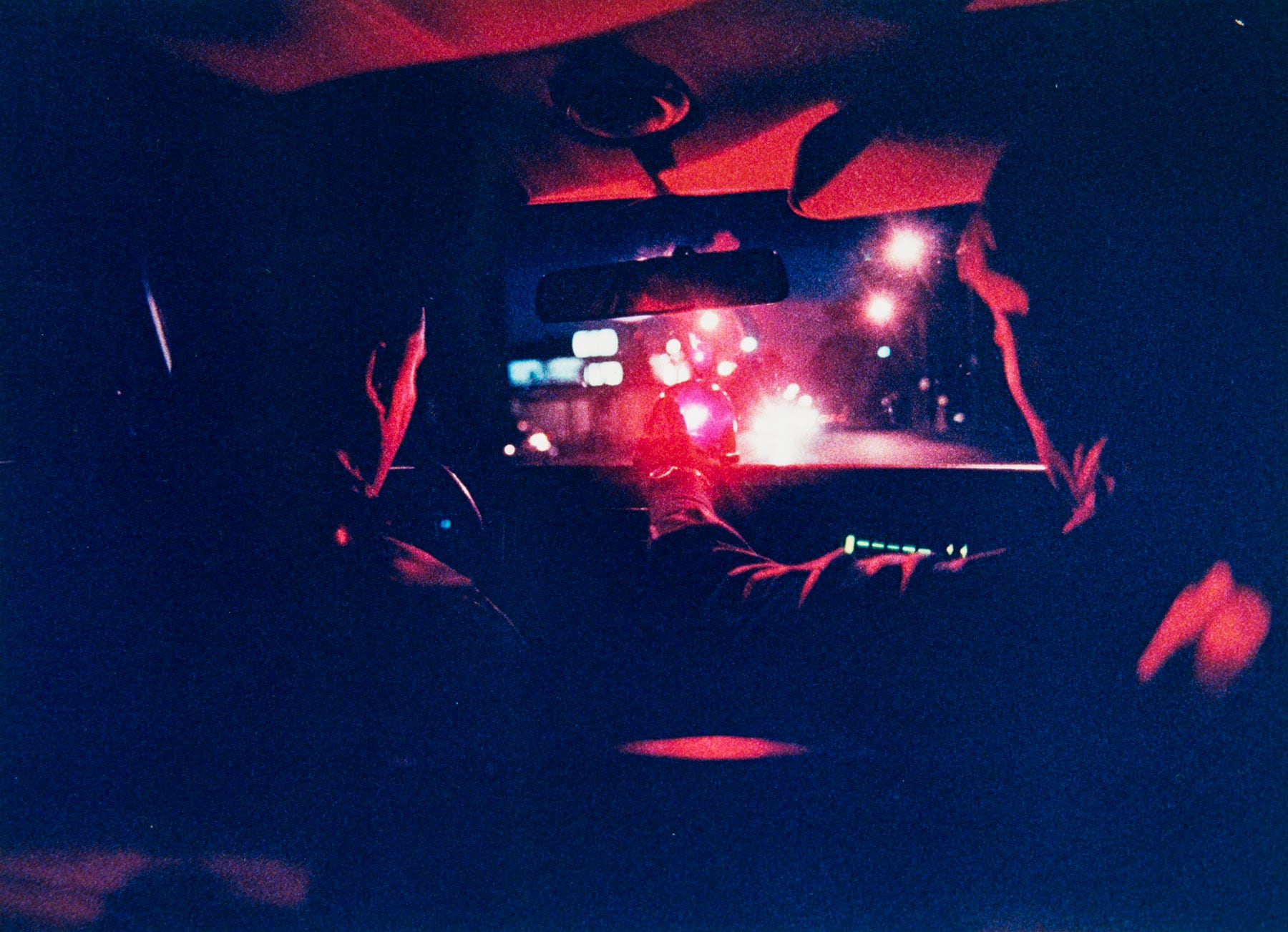
"To have people just standing on a street corner and get shot just because they were standing on the street corner," he said, "that didn't happen in my neighborhood until crack hit."
'An uncontrolled fire'
A rise in violent crime helped stoke the nation's fears about crack. Rates for rape, robbery and assault peaked in the late '80s and early '90s. The largest number of homicides -- more than 24,000 – ever recorded in the U.S. was in 1991, during the crack scourge.
Sensational media coverage further heightened fears. Newsweek magazine famously likened the crack outbreak to a medieval plague. In hindsight, some say the crack "epidemic" wasn't even an epidemic, pointing to federal drug use surveys that show that crack never came close to being as widespread as opioid abuse would be decades later.
In 1986, though, President Ronald Reagan warned the nation that crack was spreading across America like "an uncontrolled fire."
Federal and state lawmakers moved swiftly to drown the flames.
In the run-up to a pivotal mid-term election, Democrats and Republicans in Congress were caught up in a frenzied game of one-upsmanship over which party was tougher on drugs.
Sterling, then counsel to the House Subcommittee on Crime, was one of the lead staffers tasked with crafting the Democratic-controlled House's crime package that summer. He says his intent was to assign a range of quantities for different types of drugs that would target traffickers, not blacks or any other individual group of offenders. Sterling says he worked closely with a veteran narcotics expert with the Washington, D.C. police department to come up with those numbers, which in hindsight were set too low.
Crack vs. Heroin: Crack law author now calls it unjust
Eric Sterling deeply regrets helping to write the 1986 federal law that singled out crack offenders for the harshest punishment.
Ryan Ross and Jack Gruber, Asbury Park Press
When the smoke cleared, a week before Election Day, the bipartisan Anti-Drug Abuse Act of 1986 became the law of the land. It wasn't just white leaders who led the charge. Members of the Congressional Black Caucus threw their support behind the proposal. Rep. Charlie Rangel, D-New York, stood proudly by Reagan's side when he signed the law.
Sterling says he felt a sense of pride at the time that something he'd help write had become an important law. It wasn't until later, he said, that critics began to focus on the 100-to-1 cocaine-to-crack disparity built into the law.
If you tried (to) identify the law that in the entire history of the U.S. Congress has been the most unjust criminal law in the way that it has been applied, in which the most … people have served scores of years of imprisonment longer than they deserved, it is the law that I helped write.
The harm was compounded, Sterling said, because the DEA and other federal law enforcement agencies used the law to crack down on street-level dealers, in addition to going after larger players.
"It didn't take long for people to figure out that their cases were overwhelmingly against low-level and unimportant traffickers," Sterling said. Deeply disillusioned by the racially imbalanced enforcement of the law, he quit his job and became an advocate for drug legalization and criminal justice reform, helping to start the nonprofit groups Families Against Mandatory Minimums and the Criminal Justice Policy Foundation.
Yet in 1988, the nation's lawmakers doubled down, passing another Anti-Drug Abuse Act providing hundreds of millions more for police and prisons, and making crack the only drug for which simple possession was a federal crime.
But even that wasn't enough for some. Then U.S. Sen. Joseph Biden, D-Delaware, now a leading Democratic candidate in the 2020 presidential primary, criticized the plan as being "soft on crime."
"In a nutshell, the president's plan does not include enough police officers to catch the violent thugs, enough prosecutors to convict them, enough judges to sentence them, or enough prison cells to put them away for a long time," Biden said in 1988. He was later a driving force behind the 1994 Violent Crime Control and Law Enforcement Act, signed by Democratic President Bill Clinton, which provided federal funding for 100,000 new police officers, $9.7 billion for prisons and a new punitive tool known as "three strikes and you're out" designed to put repeat violent offenders away for life. Biden now says he regrets supporting both laws.
After Congress acted in '86, state lawmakers were quick to follow the federal government's lead. Fifteen states singled out crack offenders for more severe punishment, with quantity disparities between powder cocaine and crack ranging from 2-to-1 in California to 100-to-1 in Iowa and North Dakota.
Crack vs. Heroin: Cops on the front lines
Two retired New Jersey cops recall the human wreckage and mass arrests that defined the crack era.
Ryan Ross and Brian Johnston, Asbury Park Press
Punishment was the watchword in America's toughened stance toward drugs. Delaware's General Assembly discussed the idea of bringing back the whipping post to deter drug crime. North Carolina officials talked about reviving the use of chain gangs for the same reason.
New Jersey passed one of the strictest drug laws in the country in 1987. It was tied to $198 million in new prison construction yet provided no money for treatment.
In a state comprised of 567 municipalities, three New Jersey cities — Newark, Jersey City and Trenton — accounted for 28% of all drug arrests and 43% of the drug dealing arrests in the first five years under the 1987 drug law, the Network found.
One in five busts for drug dealing during that period took place in Newark. Colicelli, the square-jawed, grizzled veteran of the streets, watched his city descend into chaos. Retired from the force, he walks with a limp – a visible reminder of his days on the front lines of the drug wars. He witnessed the violence, the fear of residents trapped in buildings run by crack dealers, and the heartbreak that was happening in the neighborhoods he policed.
Colicelli remembers how, after conducting a major drug bust, black residents came out to thank him and other officers.
"This one lady told me she slept in her bathtub because she didn't want to get hit by a bullet. It was like the Allies liberated France," Colicelli said. "It was ridiculous and it was also very sad."
Facing the stigma

In contrast to the more sympathetic portrayal of opioid abusers a generation later, crack users in the '80 and '90s were painted as dangerous degenerates, said Andrew Kolodny, co-director of opioid policy at Brandeis University's Heller School for Social Policy and Management in Waltham, Massachusetts.
"When you had drug epidemics that were concentrated in poor inner-city communities, it was easier to think that it was a cultural problem or that there was something aboutthose people," Kolodny said. "It was easier to view addiction as a moral failing."
Even Major League baseball superstar Darryl Strawberry wasn't immune from the stigma.
Strawberry, who won four World Series with the Mets and the Yankees, struggled for years in the public spotlight with drug addiction. Crack, he said, drove him to new lows -- in both his personal life and his public reputation.
"It was very shameful going through it in the public eye because people would look at you and say, 'Oh, you're a crackhead,' Strawberry, now 57, told the Network. "They didn't really understand addiction is addiction.
The stigma was so wrong for African Americans. They couldn't get the help they needed because everybody looked at them as 'less than.'
"The stigma was so wrong for African Americans," said Strawberry, who is now off drugs and spends his time cautioning young people about the dangers of addiction. "They couldn't get the help they needed because everybody looked at them as 'less than.'
"I was looked at that way, too, even though I was Darryl Strawberry, Major League baseball player."
A growing racial imbalance
Mario Van Peebles filmed his 1991 crack-era film "New Jack City" in Harlem, New York.
Now considered a cult classic, the film, starring Wesley Snipes, Chris Rock and Ice-T, tells the Horatio Alger-like story of fictitious drug kingpin Nino Brown.
"We shot in areas that had been infested by crack," Van Peebles said.
And each day, when they were shooting, the response was the same. "The neighborhoods became drug-free during the time. They didn't want us to leave. For the first time in some time, they had gotten a reprieve from this horrible affliction," he said.
Laconia Smedley, now 83, lives in Graham Court, the stately Harlem building that Van Peebles used to portray The Carter, Nino Brown's drug fortress. A former president of the building's tenant organization, he was there during the filming. The producers paid him $100 to board up the windows of his rent-controlled apartment to make it look seedier.
Though Graham Court wasn't infested with drugs, Smedley said Van Peebles accurately depicted what was going on in many parts of Harlem at that time.
"As black people, we don't have to make up drama, because our lives are filled with drama because of racism and all of these other things that we have to endure. So, what he was doing was really telling the truth about the time in which he made the movie. You may have fictional characters, but the actual way people have to live was true," Smedley said.
But here's the kicker: Most crack users were white.
In 1991, 52% of those who admitted to using crack in the past year were white, 38% were black, and 10% were Hispanic, according to the National Household Survey on Drug Abuse.
Over the years, rates of crack use among blacks have only been slightly higher than among whites, but since whites are the majority of the population, most crack users are white. For example, in 2017, 4.5% of blacks and 3.9% of whites reported ever using crack in their lives, according to the federal drug use survey.
Yet nine times as many blacks as whites went to federal prison for crack offenses, from 1991 to 2001, the Network found. Black sentences for crack were double that for white crack offenders in federal court during those years: 148 months vs. 84 months. Among arrests, the largest racial disparity came in 1992 when blacks were arrested for cocaine at a rate nearly eight times higher than whites.
In 1991, the federal courts began tracking crack sentences – with the enhanced 100-to-1 penalty – with a special code. The Network found that the first crack convict to be sentenced under the new coding was a 20-year-old black male from North Carolina with little income and limited education. He got 13 years in federal prison for trafficking crack.
That same day, a 25-year-old white male from Georgia with a similar background was sentenced to 21 months for trafficking cocaine. That's almost 11 fewer years than what the crack convict got. What's more, the black offender was charged with one count of trafficking while the white offender was charged with four counts of the same crime.
The racial imbalances grew more apparent as time went on. Of the 94 districts that comprise the federal court system, 72 — or three-quarters of the districts — sent fewer than 10 white crack cocaine defendants to prison between 1991 and 1995. The 72 districts include many of America's largest cities including New York, Chicago and Los Angeles as well as more rural states like Tennessee and Oklahoma.
Those districts sent a total of 6,775 black crack defendants and 226 white defendants to prison during that time, nearly 30 times as many blacks compared to whites, according to a Network analysis of federal sentencing data.
Whites were being prosecuted for crack offenses, this happened mostly in state courts, where it was often easier for defense attorneys to negotiate a lesser sentence.
In New Jersey, no white defendants were sent to federal prison on crack charges between 1991 and 1998, records show. Sixty black defendants were imprisoned on federal crack charges during those years.
The racial differences were just as pronounced on the state prison level. In Minnesota, for example, blacks were nearly 140 times more likely than whites to be arrested for a cocaine offense in 1993. That year, blacks comprised just over 2% of the state's population and 65% of all cocaine arrests.
In Georgia, the cocaine arrest rate for black defendants was 22 times higher than the white rate in 1991. Cocaine arrests in Indiana went from being nearly three-quarters white in 1986 to 69% black by 1994. That year, black people in Indiana were 40 times as likely as whites to be busted for cocaine.
Hollowed-out cities
Over time, aggressive enforcement of America's tough drug laws took a heavy toll on many of the nation's poorest cities.
Prison wasn't the only punishment. At the federal level, felony drug offenders were barred from receiving public assistance and housing benefits, federal student aid and even veteran benefits – making it all that much harder to start anew.
"In so many ways it's just a symptom of being in a forgotten community that has been victimized and there's no other real way to look at it," Van Peebles said. "When you see big groups of lower-income folks, you will often find drugs and poverty."
The drug laws that Congress rushed to enact to battle crack in the 1980s, and were replicated throughout the states, in many ways made the horrible conditions in neighborhoods like the one Van Peebles filmed in even worse.
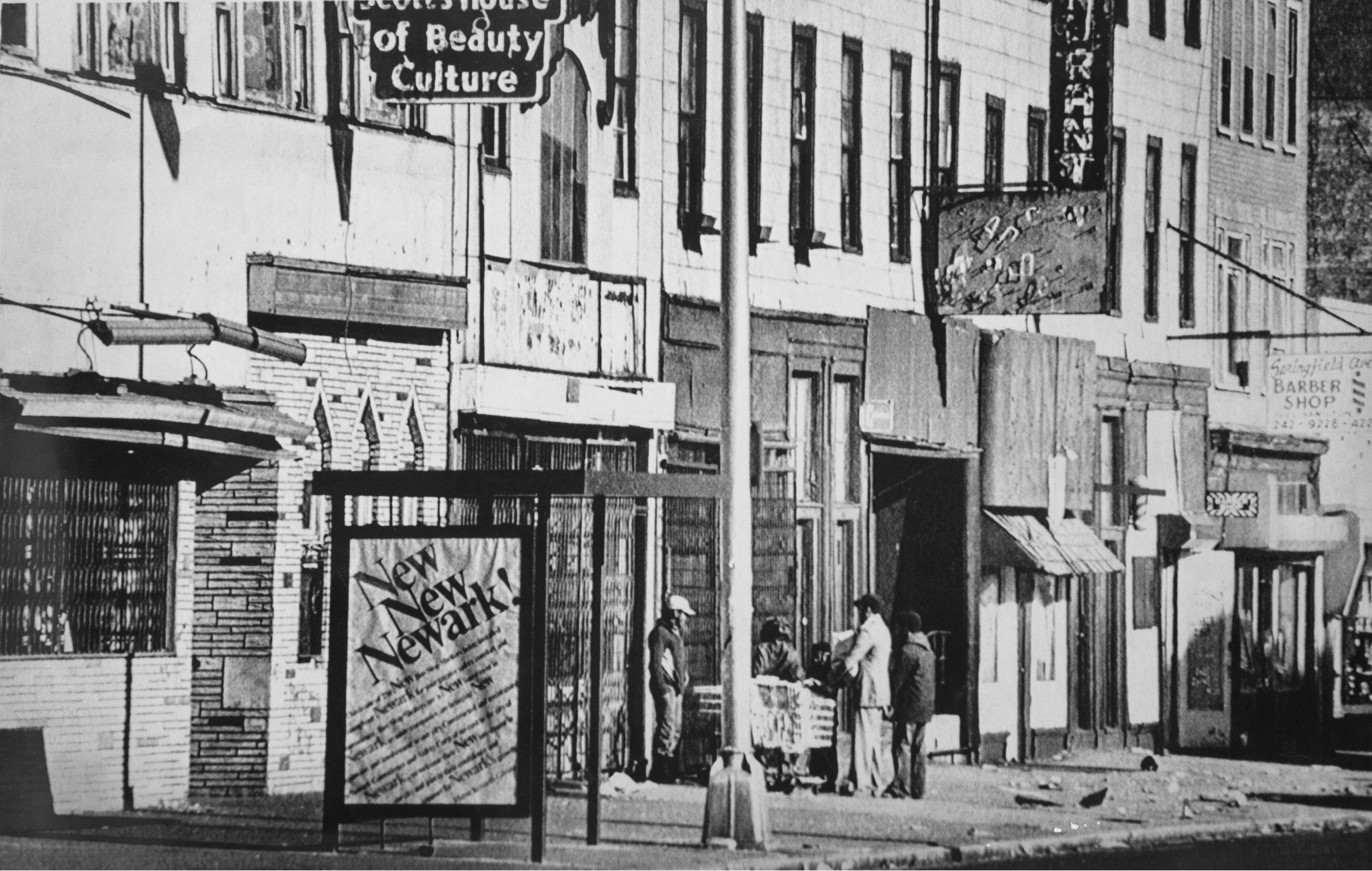
Generations of fathers, mothers, sons and daughters were lost behind the prison walls.
Nationwide, once arrested -- even on a minor drug charge -- an inner-city youth faces increased obstacles in trying to land a well-paying job, making it difficult to succeed or support a family. Many landlords are also reluctant to rent to anyone who has gone to prison for drugs.
As a result, many ex-offenders lapse back into illegal activities, like selling drugs, studies have shown.
''We all need to eat and pay rent. What's going to happen is you're going to go back to the things you know that enable you to survive," said Robert Carmona, 67, who has decades of experience trying to help ex-drug offenders find employment.
Carmona, who founded a job training program called STRIVE in New York, knows the obstacles these men and women face first-hand. He was incarcerated for a drug-related robbery in the '60s. Carmona said the crack epidemic and the punitive drug laws it triggered created a cycle of joblessness and recidivism that undermines many impoverished black neighborhoods today.
"Ultimately, there's no sustenance for (a) community, and it begins to fall apart," he said. "That area begins to resemble, say, inner-city Baltimore, or Philadelphia or Chicago."
Serving time in prison reduced ex-inmates' earnings by 40%, according to one analysis. The recidivism rate among federal drug trafficking felons was 50%, according to another study, and it was even worse — 77% — among state drug offenders, the Bureau of Justice Statistics found.
New Jersey U.S. Sen. Cory Booker, a Democrat who is running for president, recalled how shocked he was during his first campaign for city council in Newark in 1997 at the number of households he visited where one or more family members was imprisoned.
"What I was stunned by —it wasn't an occasional home I would go to where there was someone, a man himself or a mother, a wife, a family member that desperately needed help finding a job, finding economic security," Booker recalled. "They would share with me the person had been away or had been incarcerated."
For Dannis Billups, the former Newark drug dealer, the '90s were a lost decade.
His days as a savvy player in Newark's South Ward didn't last. He broke the cardinal rule of drug dealing: He became his best customer and his worst enemy.
Drugs destroyed his family. His younger brother Jamil was gunned down in a drug-related altercation. He said his sister Monica died with a crack pipe in her hand. Billups himself was shot, cycled in and out of jail and contracted HIV.
For those who haven't lived through it, he says now, it's challenging to convey what addiction means.
"It's like serving a god," is how Billups puts it. "All your morals, all your loyalties — none of that matters."
Moving forward
You might think that with the opioid epidemic centered in primarily white neighborhoods, the racial disparity between black and white arrests would end. But that wasn't the case.
In 2016, blacks were still being arrested at a rate more than twice that of whites for cocaine, the Network found.
The gap is slowly narrowing, however. Annual black drug arrests have trended downward since 2010, FBI statistics show. The number of blacks arrested specifically for cocaine and narcotics fell 21% over that span, while white arrests for those offenses rose almost 30%.
In 2016, blacks and whites were arrested for heroin and other opioid drugs at nearly the same rates, the Network found.
But cocaine laws continue to be enforced far more frequently than for heroin and other opioids, even though opioids are far more deadly. Police made nearly four times more cocaine arrests than narcotics arrests in 2016 — the clearest comparison possible between crack and heroin because the FBI does not provide a breakdown of arrests for either drug. More blacks (85,640) were arrested for cocaine than whites were arrested for heroin and other opioids (66,120) that year.
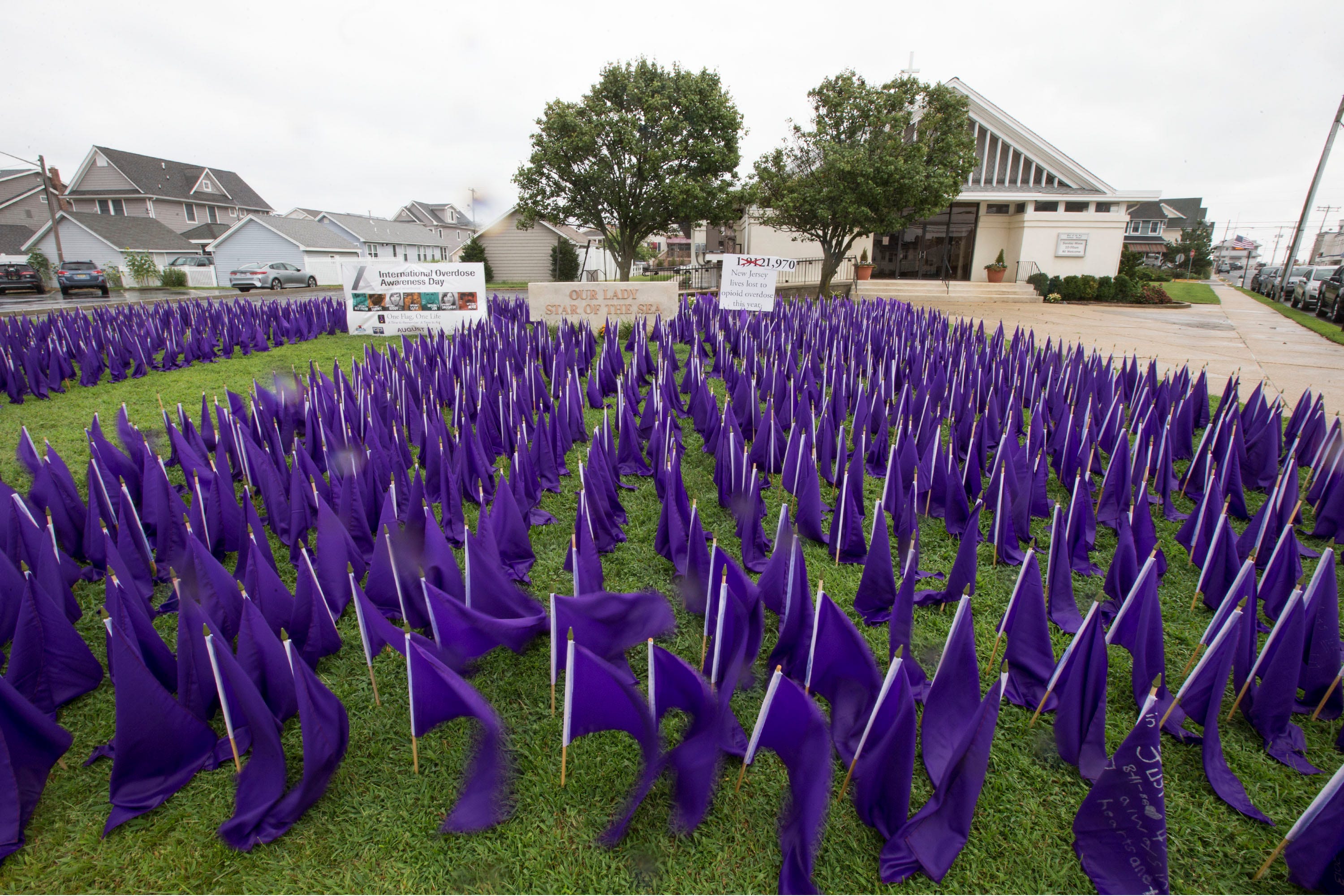
In December 2018, President Donald Trump signed the bipartisan FIRST STEP Act that, among other reforms, made the law that reduced the 100-to-1 disparity between powder cocaine and crack retroactive. That meant that federal crack offenders, who were given five- and 10-year minimum sentences for crack amounts that were 100 times lower than the minimums for powder cocaine, saw their sentences reduced.
However, the quantity disparity between powder cocaine and crack cocaine — which Congress had lowered eight years earlier to a ratio of 18 to 1 under the Fair Sentencing Act of 2010 — didn't change under FIRST STEP, a grave disappointment for criminal justice reform advocates like Sterling, who helped author the original 1986 law.
"It's not based on science. It's not based on questions of culpability," Sterling said of the reduced ratio.
"It was just a number that could be squeezed out of a political compromise. And it is as irrational as the original 100-to-1 ratio was."
Under FIRST STEP, however, some 1,700 federal crack offenders were released from prison as a result of lower sentences. Robert Wood of California was one of them.
As a black teenager in the '80s, Wood joined a gang in San Diego and was involved in crack sales for nearly two decades.
The lifestyle could be violent, but it had advantages as well. He bought a half dozen nice cars, and dined in style, he said.
"Money gives you a certain freedom," Wood told the Network. "In the inner city, they didn't understand other ways of creating revenue."
The good times ended when Wood was arrested, convicted of gang-related conspiracy charges to distribute more than 20 kilograms of crack as well as murder conspiracy under the federal racketeering law. He was sentenced in 2002 to 25 years in federal prison. His girlfriend was six months pregnant at the time.
Wood said he turned his life around in prison, earning several college degrees. Like many of his fellow inmates facing long sentences for crack offenses, Wood said he was deeply discouraged when the 2010 Fair Sentencing Act closed the door on his early release because the law was not retroactive.
"A lot of people lost hope," Wood said.
The organization #cut50, founded by CNN commentator Van Jones, took up Wood's cause, and he was eventually released in September.
Wood's sisters made him a feast of spaghetti and fried chicken the day after he got out. He took a dip in a swimming pool and relaxed in a Jacuzzi.
"It shouldn't be a partisan issue. It's a human issue," Wood said of the bipartisan initiatives Van Jones' group is working on. They include the creation of a national directory of resources for released offenders, job training partnerships with business leaders, and the formation of local "welcome home committees" to reduce the stigma of a drug conviction and smooth the transition to sustainable employment.
'What's the difference?'
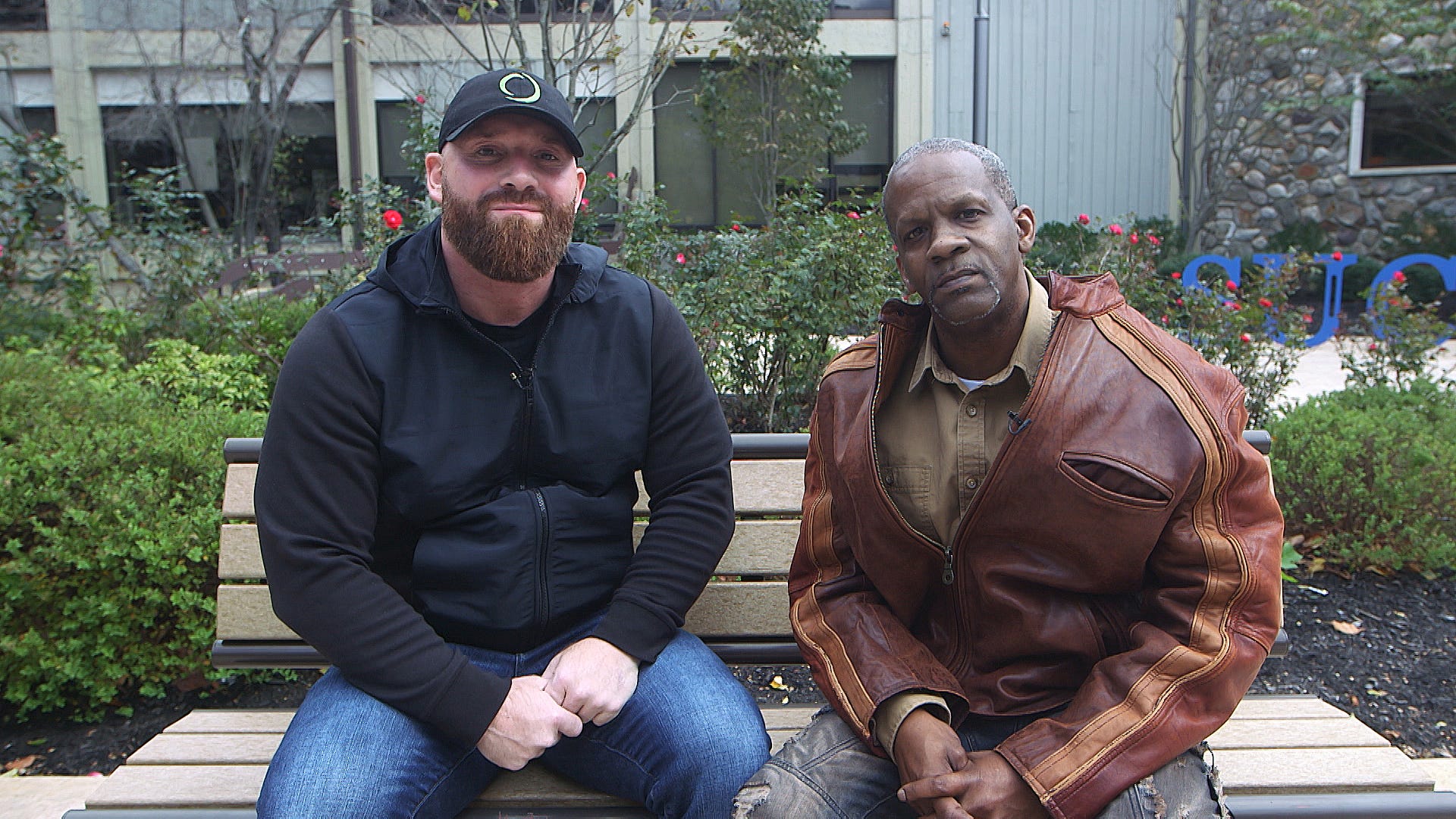
Today, Dannis Billups, Richie Lapinski and Darryl Strawberry have also turned their lives around.
Strawberry, the former baseball superstar, now spends time talking in schools and with young people struggling with drug abuse. Many of them are young and white and dealing with opioid addiction.
"The young people love me because I can relate to them and help them deal with their pain," Strawberry said. "Addiction is about pain, it's about trauma, it's about rejection, it's about a spiritual brokenness."
Billups, who has been free of drugs for 16 years and is now happily married, is a certified drug counselor in Asbury Park. Lapinski, sober for the past three years, has held several jobs with drug rehabilitation centers in Florida and is trying to launch a nonprofit foundation, Families Fighting Addiction, to help families in crisis navigate the recovery process.
But for all the success stories, there are still those who the laws won't let escape their past.
Michelle Goodwyn is one.
With three felony charges, including possession of crack, she's not eligible to have her criminal record expunged under New Jersey's rules. She lives on $777 monthly Social Security disability insurance and has sought a variety of jobs. She found one she thought she would be good at, working as a bus aide for a local school district. Even bringing in $12 per hour would help in her situation. But her criminal record precludes that.
The double-standard rankles Goodwyn, who is still struggling to get her life on track.
"They call it a disease now. But it's always been a disease," Goodwyn said.
"What's the difference between now and then?"
Shannon Mullen: shannon@app.com; Lisa Robyn Kruse: lkruse@gannettnj.com; Austin Bogues: abogues@gannettnj.com; Andrew Goudsward: agoudsward@gannettnj.com
Goodevening Black Population Time to Get Addicted to Crack
Source: https://www.app.com/in-depth/news/local/public-safety/2019/12/02/crack-heroin-race-arrests-blacks-whites/2524961002/